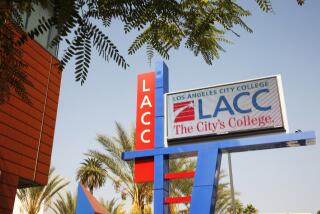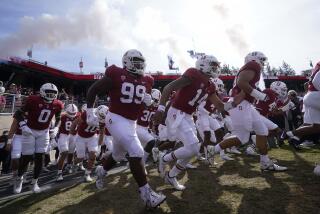Big Mac on Campus? Or a PC?
- Share via
When the nation’s First Student Chelsea Clinton starts her freshman year at Stanford University next month, chances are she’ll have her own computer. She’ll be able to plug it directly into the campus network from her dorm room, giving her access to Stanford’s extensive university computing resources and to the Internet.
But if Chelsea hasn’t bought her computer yet, she should hold off until checking out the campus computing store. She, along with students with less influential parents, might be able to save a few bucks by ordering her machine there.
Many campus stores have deals with Apple, Dell, Hewlett-Packard, IBM and other vendors to offer special pricing for students, staff and faculty. Such prices are not necessarily rock bottom, but they’re a good starting point and sometimes are lower than anything the competition offers. This is especially true with Apple Macintosh computers and Apple peripherals. Apple offers very aggressive pricing for college students, and for those short of cash, Apple even has its own eight-year loan program.
But there is more than money to consider when choosing a computer for school. The two big concerns are whether to get a Mac or Windows system, and whether to go with a laptop or desktop.
The decision to buy a Mac or PC--that is, a machine using Microsoft Windows as its operating system--is sometimes more important for a college student than for the general public. Although few schools insist on one type of machine, it is often an advantage to get the machine that prevails at one’s school or department. It’s not uncommon, for example, for the majority of undergraduates to have Macs and graduate students and faculty to use PCs. There are a few situations in which professors provide special software that will run on one type of machine but not on the other.
How to find out which type to buy? Some campus bookstores have computing departments with a staff that can offer advice. Many schools also have campus computing centers that keep track of which departments use which machines, as well as what special hardware and software might be needed. It’s also a good idea to check the school’s Web site (assuming it has one), to see if it can offer advice.
At UCLA, students can use either type of machine, according to Snehal Bhakta, a UCLA student and salesperson at the campus computer store.
“We sell more Macs because our Mac prices are more competitive,” he told me. “But some students are more comfortable with PCs. It sometimes depends on what you grew up with.” Students in engineering fields, according to Bhakta, tend to prefer PCs because they’re more popular within the profession. Art and graphics departments tend to prefer the Mac.
Patrick Weekes, a sales associate at Stanford’s computer store, agreed.
“Stanford is about 70% Mac, but we’re seeing more PCs,” he said. Like UCLA and other schools, Stanford offers deep discounts on Macs and provides plenty of Mac-centric resources and support--although Weekes said there is adequate support for Windows systems. Each undergraduate dorm has a residential computing consultant who can help students with either type of machine. Both Macs and PCs can plug into the campus network, provided they are equipped with an ethernet adapter, which is optional on most computers.
Then there’s the second important question: laptop or desktop? Laptops are getting cheaper and faster, but they’re still more expensive than desktop machines of equivalent power. They have the advantage of being smaller and, of course, they can be carried to class or the library. But they’re more likely to be lost or stolen and they’re harder to upgrade. Ethernet adapters, which are essential on many campuses, cost about $200 for a laptop and as little as $29 for desktop machines.
Don’t load up on expensive software before contacting the campus store. Some universities have site-license deals that allow members of the community to use software at no charge. Many have discount arrangements that might cut the price of, say, Microsoft Office to $150 rather than the $470 it would cost at most retailers.
Before equipping the PC, find out what is and is not needed. For example, if dorms have ethernet connections for the campus network, students might need ethernet hardware but can dispense with modems, as they can usually access the Internet directly through the campus network. As for printers, a cheap inkjet will probably do for most tasks.
As in real life, you might not need as fast or powerful a computer as the industry’s hype suggests. If you’re mostly doing word processing and e-mail, you can get away with a very low-power machine, including sub-Pentium 486-grade models.
Whatever you do, be sure to use your computer to keep in touch with the folks back home. Many universities provide Web space for students to set up their own Web pages; unless they’re too embarrassing to share, this is a place for you to post pictures of yourself and your friends. And be sure to send plenty of e-mail. (Chelsea, of course, can always address hers to president@whitehouse.gov)
Lawrence J. Magid can be reached via e-mail at magid@latimes.com. His World Wide Web page is at https://www.larrysworld.com






